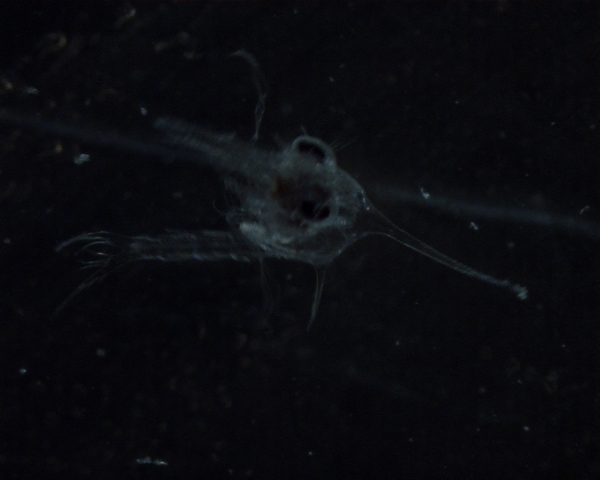Snow Crab
Scientific name: Chionocetes opilio
Phylum: Arthropoda
Subphylum: Crustacea
Class : Malacostraca
Order: Decapoda
Description: Snow crab has a pair of large claws and 4 pairs of legs. Males are larger than females. Males can reach 150mm of carapace width, 75cm with legs fully stretched out. Females can reach 65mm of carapace width, 25cm with legs fully stretched out. Color is light orange-beige when young, tan color as they get older.
Distribution: Snow crabs live strictly in marine mud, sand or silt bottom substratum, from sub-tidal to 150m down. They migrate into shallow waters for breeding and molting. They are found from mid Labrador south to Cape Breton.
Locomotion: Snow crabs primarily move forward by flexion and extension of limbs.
Food gathering: Snow crabs are predators. They grasp prey with enlarged front claws followed by tearing, grinding or shearing with various mouth parts.
Gas exchange: Snow crabs have gills in branchial chambers for gas exchange. They use gill bailers (elongate exopods) that vibrate to create ventilating currents.
Reproduction: The sexes are separated, with eggs being fertilized internally. Females can carry eggs for 2 years. Their hatchlings are spiny and planktonic larvae known as zoea. The growth of snow crabs is very slow, 8-15 years to reach maximum size.
Interesting facts: They are delicious eating and the fishery is for the male only. The bulk is sold to the United States and Japan. Newfoundland is the leader in snow crab export in Canada with over $450 million sold in 2002.
Images
 |
OSC Research
Snelgrove lab - Masters student Ashlee Lillis is working on habitat selection at settlement in larval snow crab. Her research will determine the effects of temperature, substrate and predation on settlement.